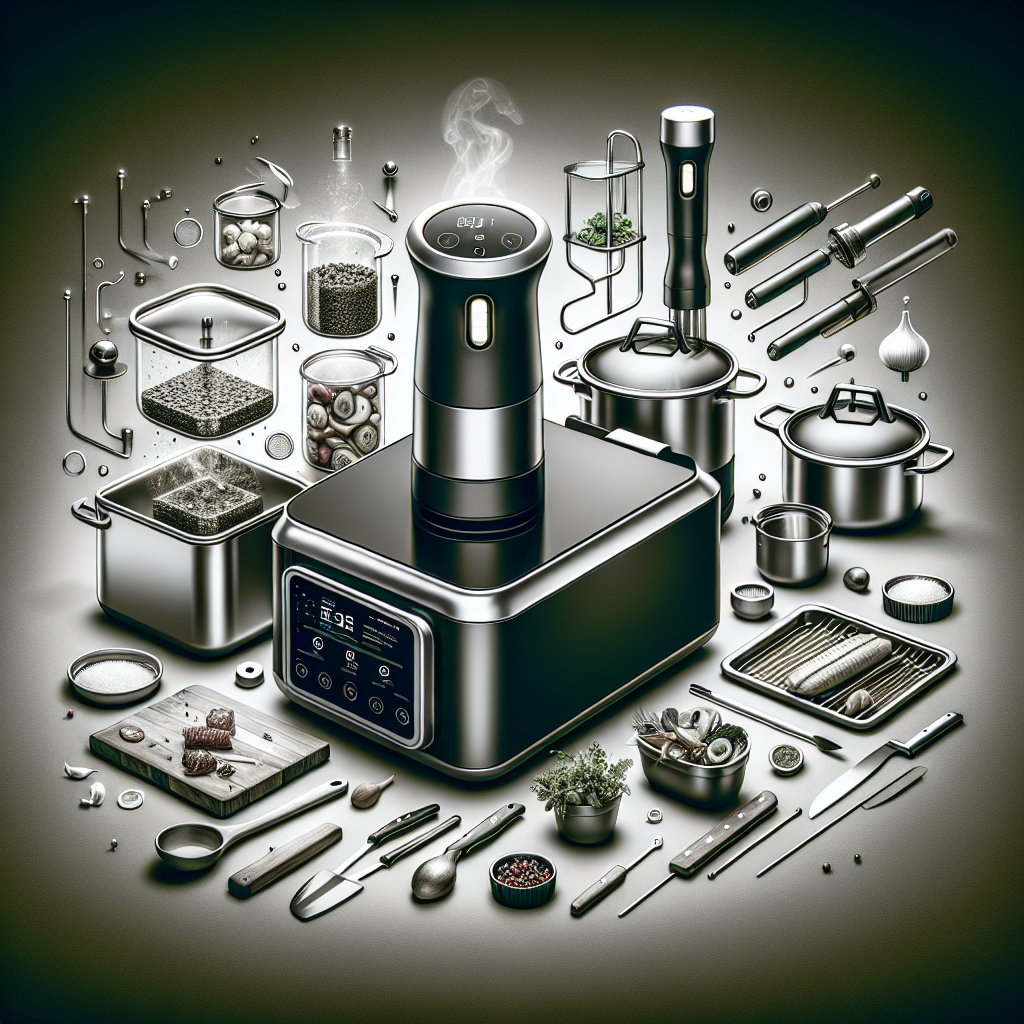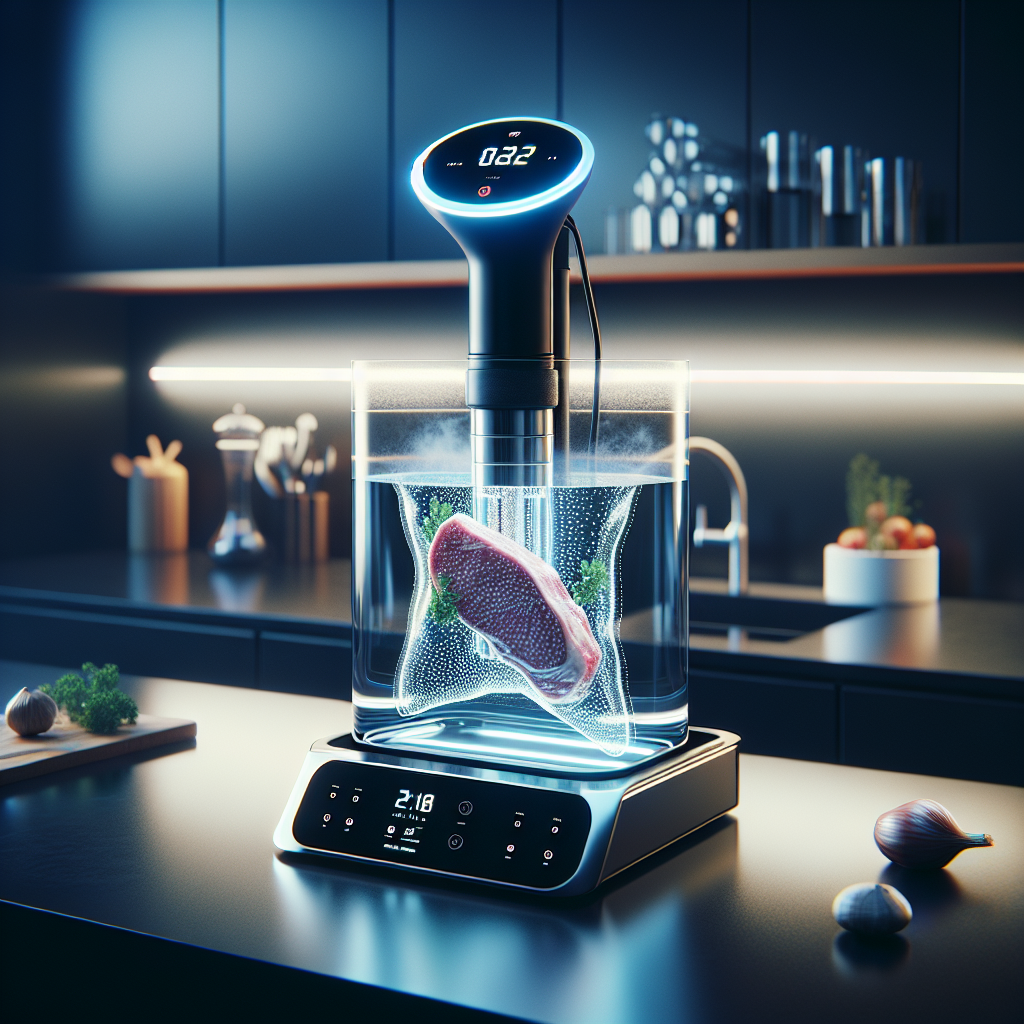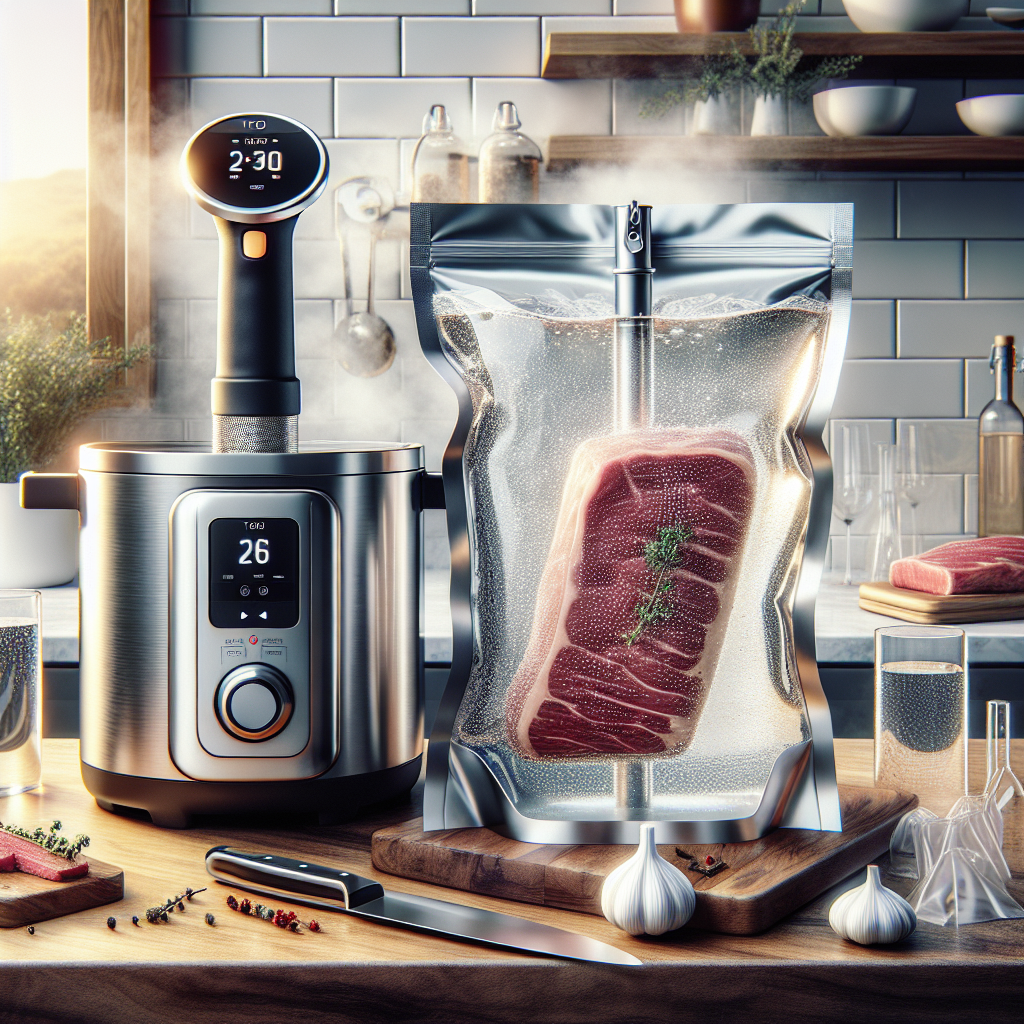
If you’ve ever been curious about trying sous vide cooking, you may be wondering what equipment you need to get started. In this article, we’ll explore the essential tools required for this culinary technique that ensures perfectly cooked and flavorful dishes. From immersion circulators to vacuum sealers, we’ll cover all the necessary equipment that will have you effortlessly preparing restaurant-quality meals in the comfort of your own kitchen. So, let’s get ready to embark on a flavorful journey with sous vide cooking!
Sous Vide Machine
If you’re looking to elevate your cooking game and explore the world of sous vide cooking, the first piece of equipment you’ll need is a sous vide machine. This magical device is responsible for keeping your water bath at a precise and consistent temperature throughout the cooking process. There are two main types of sous vide machines to choose from: immersion circulators and water ovens.
Immersion Circulator
An immersion circulator is a small, compact device that you can attach to any container or pot you already have in your kitchen. It heats and circulates the water, ensuring a uniform temperature throughout. Immersion circulators are incredibly versatile and allow you to cook in various containers of different sizes. They usually come with a built-in display, allowing you to easily set and monitor the temperature.
Water Oven
If you’re looking for an all-in-one solution, a water oven might be the right choice for you. These specially designed machines have a built-in water bath and heating element, eliminating the need for additional containers. Water ovens often come with more precise temperature control and larger cooking capacities compared to immersion circulators. They are perfect for cooking larger batches or hosting dinner parties.
Vacuum Sealer
To make the most out of your sous vide cooking experience, it’s crucial to properly seal your food. A vacuum sealer will become your best friend in the kitchen when it comes to ensuring a tight seal, preventing any water from entering the bag and compromising the flavor and texture of your food. There are two main types of vacuum sealers: external vacuum sealers and chamber vacuum sealers.
External Vacuum Sealer
An external vacuum sealer is a popular choice among home cooks embarking on their sous vide journey. These machines work by suctioning the air out of specially designed vacuum sealable bags. Simply place your food in the bag, insert the open end into the machine, and let it work its magic. External vacuum sealers are generally more affordable and take up less space.
Chamber Vacuum Sealer
If you’re serious about sous vide cooking and plan to do it on a regular basis, a chamber vacuum sealer might be worth considering. These professional-grade machines offer a high level of vacuum sealing performance and are suitable for both home cooks and culinary enthusiasts. Unlike external vacuum sealers, chamber vacuum sealers allow you to seal liquids and delicate foods more effectively. They do come at a higher price point and take up more space, but the investment is often worth it for consistent results.

Sous Vide Bags
When it comes to selecting the right sous vide bags for your cooking adventures, there are two main options: reusable sous vide bags and vacuum sealable bags. Both options serve the purpose of creating a secure and airtight seal, keeping your food safe and protected during the sous vide process.
Reusable Sous Vide Bags
Reusable sous vide bags are usually made of food-grade silicone or BPA-free plastic. These eco-friendly options are designed to be washed, dried, and used again, reducing waste and saving you money in the long run. They often feature a ziplock or slider mechanism for easy sealing and are suitable for cooking a wide variety of dishes.
Vacuum Sealable Bags
Vacuum sealable bags, also known as vacuum pouches, are specifically designed for use with vacuum sealers. These bags are made of durable and puncture-resistant materials, ensuring a reliable seal every time. They come in various sizes to accommodate different portion sizes and can be customized to fit your specific needs. When using vacuum sealable bags, it’s important to ensure they are approved for sous vide cooking to withstand the high temperatures of the water bath.
Weights or Clips
To make sure your food remains fully submerged in the water bath and cooks evenly, you’ll need to use weights or clips. These handy tools help prevent your sous vide bags from floating to the surface and expose your food to inconsistent temperatures.
Weights
Weights, such as sous vide weights or even a few stainless steel or ceramic plates, can be placed on top of your food bags to keep them submerged. They provide a simple and effective solution to maintain an even cooking environment for your sous vide creations.
Clips
Clips are another popular option for keeping your sous vide bags in place. These come in various sizes and styles, ranging from simple binder clips to specialized sous vide bag clips. Simply clip them onto the sides of your container, securing the bags in place.
Insulation
Insulation plays a key role in maintaining a consistent temperature in your water bath and reducing heat loss during the cooking process. There are two popular methods of insulating your sous vide setup: insulating balls and an insulating lid.
Insulating Balls
Insulating balls, also known as sous vide balls, are small, heat-resistant balls that you can place on top of the water in your container. They help reduce evaporation and heat loss, maintaining a stable cooking environment. The lightweight nature of the balls also makes it easier to place and remove your food bags without causing any disturbances.
Insulating Lid
An insulating lid is another effective way to minimize heat loss and promote even cooking in your sous vide setup. These lids are usually made of insulated materials or have built-in insulation layers. They fit securely over your container, creating a seal and trapping heat inside. Some lids also feature an opening for the immersion circulator or the sensor of a water oven, allowing you to cook with ease.
Heatproof Container
Choosing the right container for your sous vide cooking is essential to ensure efficient heat transfer and maintain a safe cooking experience. There are two popular options that provide excellent heat retention: Cambro containers and stock pots.
Cambro Containers
Cambro containers are a favorite among sous vide enthusiasts. These sturdy and heatproof containers are made of durable food-grade plastic, designed to withstand high temperatures without warping. Cambro containers often come with easy-to-read volume markings, ensuring accurate measurements. Their rectangular shape makes them ideal for arranging multiple bags in the water bath.
Stock Pots
If you already have a stock pot or large cooking pot in your kitchen, you can use it for sous vide cooking as well. Make sure the pot is made of stainless steel or another heatproof material to prevent any leaching of harmful substances. A pot with a tight-fitting lid is preferred for better heat retention. However, keep in mind that cylindrical pots may not be as space-efficient as Cambro containers when cooking multiple bags.
Kitchen Timer
When cooking sous vide, precise timing is crucial for achieving the perfect results. A reliable kitchen timer will become your go-to tool for ensuring that your food is cooked to perfection every time. Whether it’s a standalone digital timer or a timer built into your sous vide machine, having an accurate and easy-to-use timer is a must-have in your sous vide cooking arsenal.
Water Bath Rack
To optimize your sous vide setup and achieve even cooking, a water bath rack can be a game-changer. These racks are specially designed to hold your food bags in place, allowing for maximum water circulation and preventing any bags from touching the sides or bottom of the container. Some racks come with adjustable dividers, providing versatility for different bag sizes and quantities.

Tongs
When it comes to handling your food bags in the hot water bath, a good pair of tongs is your best friend. Look for tongs with a long handle and heat-resistant tips to ensure safe and easy maneuvering. Tongs come in handy when removing or repositioning bags during the cooking process, without the risk of burns or spills.
Thermometer
While sous vide machines typically have built-in temperature control, having a reliable thermometer can provide added peace of mind. A separate food thermometer allows you to double-check the doneness of your food and verify the accuracy of your sous vide machine. Look for a digital thermometer with a wide temperature range and an instant-read feature for quick and accurate readings.
In conclusion, to embark on your sous vide cooking journey, you’ll need a sous vide machine (either an immersion circulator or water oven), a vacuum sealer (external or chamber), appropriate sous vide bags (reusable or vacuum sealable), weights or clips to keep your food submerged, insulation (insulating balls or a lid) to prevent heat loss, a heatproof container (Cambro container or stock pot), a kitchen timer, a water bath rack for even cooking, tongs for handling bags, and a thermometer for additional precision. By having this comprehensive set of equipment, you’ll be well-equipped to explore the exciting world of sous vide cooking and create restaurant-quality dishes in the comfort of your own kitchen. Happy sous vide cooking!





